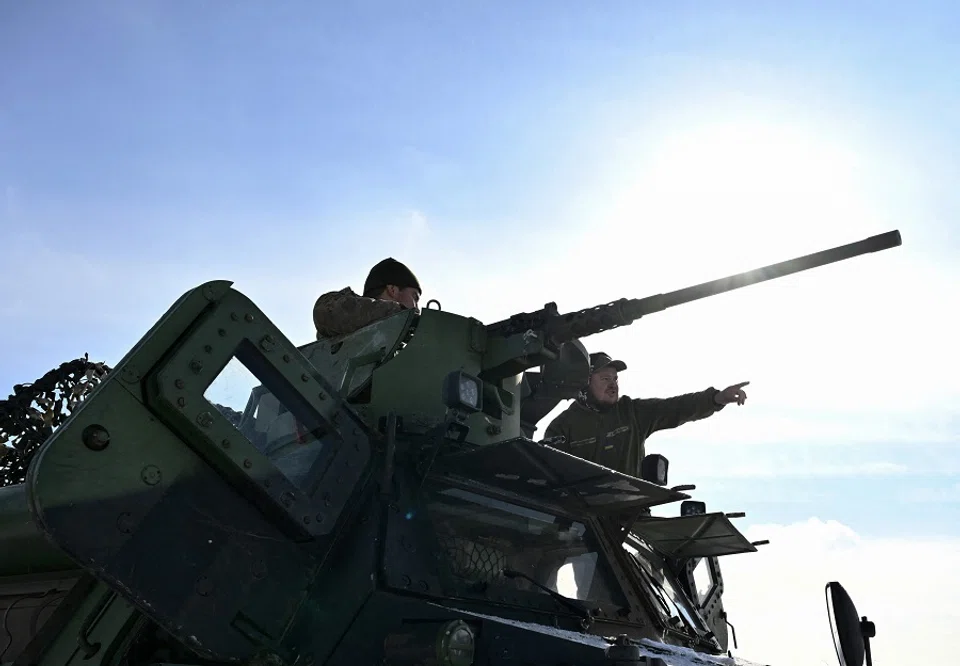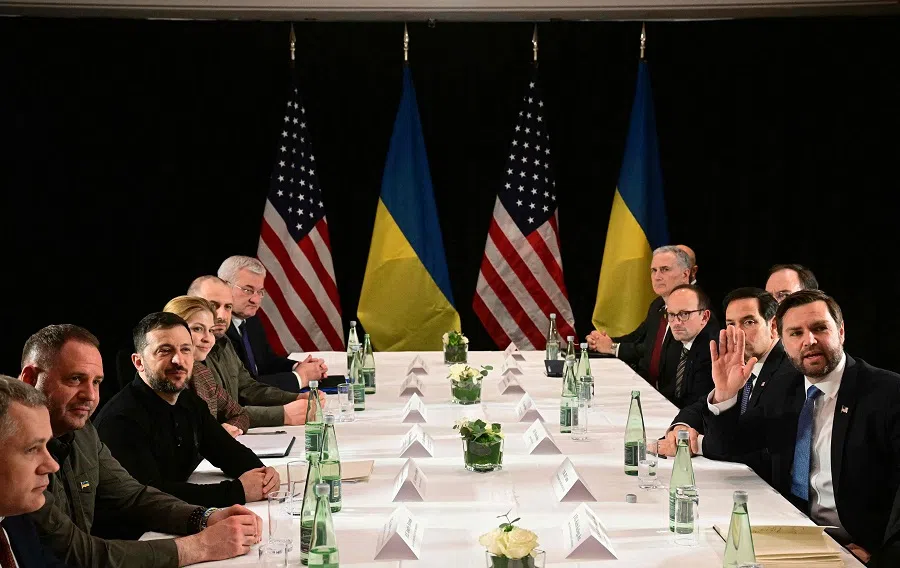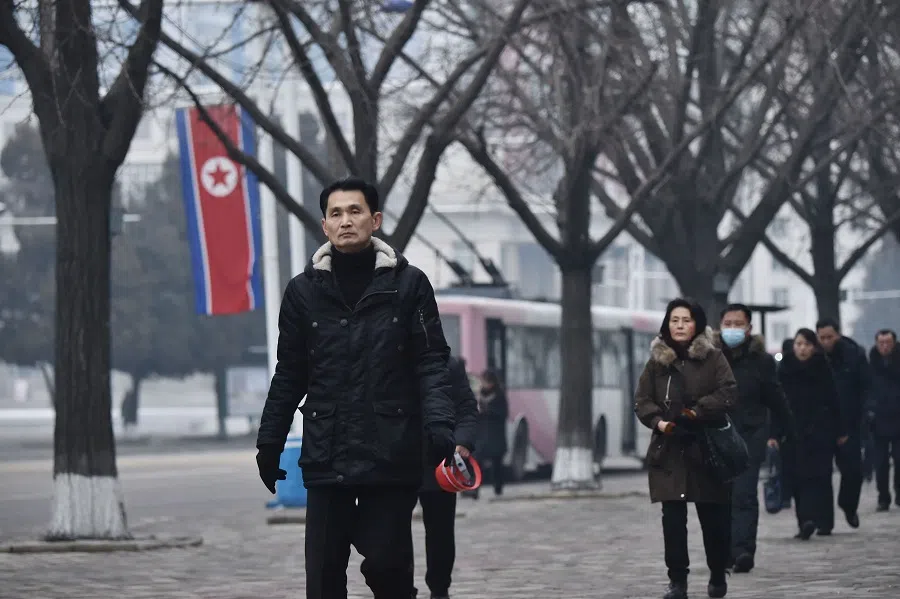How a ceasefire in Ukraine could affect Asian security
A ceasefire in Ukraine could enable Washington to strengthen its deterrence network in the Indo-Pacific. But this depends on whether Trump hews to traditional balance of power considerations.

It might be difficult to end the fighting in Ukraine, but forces in play could eventually propel Russia and Ukraine to do so. A ceasefire could lay the ground for Washington to fully implement its integrated deterrence network in the Indo-Pacific. This, however, is predicated on the assumption that Trump will hew to traditional US instincts regarding alliances and partnerships.
Both Russia and Ukraine are exhausted by the war. Ukraine, with a smaller population, has suffered heavy casualties and does not have enough combat-fit soldiers. Under the Trump administration, it might not get the degree of military and economic support from the West that it needs to keep on fighting at the present tempo.
Although Russia has a much larger population and a larger economy which has been placed on a war footing, its army has suffered horrendous casualties which would be difficult to replace. Russia’s economy is facing serious stresses, including high inflation which could pose domestic political problems for Putin. And Trump could possess the powerful incentive of lifting economic sanctions on Russia. This includes access to the SWIFT banking system and the lifting of remaining economic sanctions tied to the progressive implementation of any ceasefire agreement.
Trump’s pressures on the European allies to bear more of their own defence burdens may also enable the US to reduce its military assets in Europe for redeployment to Asia.
With a ceasefire in place, the US will be freed of the burden of supplying massive military assistance to Ukraine. This might be at the expense of Taiwan which needs some of the same weapons, for example, advanced air defence missile systems and the High Mobility Artillery Rocket Systems (HIMARS) rocket system, to build its deterrent against any future Chinese military action against the island. The huge deliveries to Ukraine have already run down America’s inventories of HIMARS, Army Tactical Missile Systems (ATACMs) and Patriot air defence systems.
US may be able to lessen burden on resources
The US will also be able to focus on implementing its strategy of building its integrated deterrence network along the first island chain. This would be backed by new capabilities such as the deployment of intermediate range ballistic missiles, hypersonic weapons and the upgrading of World War Two airfields on the second and third island chains in the Western Pacific.
Trump’s pressures on the European allies to bear more of their own defence burdens may also enable the US to reduce its military assets in Europe for redeployment to Asia. Furthermore, any easing of sanctions based on Russia’s good behaviour could also discourage Moscow from challenging the US and its allies in the Western Pacific through military cooperation with China.

Taken together, this should strengthen the US’s strategic position and influence in East Asia. Trump understands that East Asia is different from other parts of the world because it is where the greatest threat to America’s pre-eminence looms. He would not want to do anything that facilitates China’s dominance. This optimistic perspective assumes that Trump appreciates the vital importance of Asian alliances, works out differences with allies and will execute a comprehensive and smart strategy to deal with China.
Two caveats, however, work against such a sanguine assessment. Given Trump’s unpredictability and transactionalism, there are doubts about US security commitments and whether he will defend Taiwan in the event of Chinese military action against the island. Further, there are uncertainties about how Trump will handle relationships with critical US allies in the Western Pacific. Trump is expected to exert pressure on Japan and South Korea to pay much more for US security guarantees.
Washington could reap a significant strategic gain if a peace deal on Ukraine and the possible lifting of US sanctions on Russia could strengthen its relations with Moscow and enable the US to weaken the Sino-Russian nexus.
The edifice of US network of alliances and partners is built on the US’s perceived standing among regional countries. In Southeast Asia, this was already damaged by Washington’s stance on the Gaza war during the Biden administration. It is unlikely to recover under the Trump Administration. Barring the Philippines and possibly Vietnam, the US’s regional standing might worsen given Trump’s unilateralism, unpredictability and perceived pro-Israel stance.
Impact on the China-Russia-North Korea relationship
The Ukraine war also has some repercussions on the triangular China-Russia-North Korea relationship. Washington could reap a significant strategic gain if a peace deal on Ukraine and the possible lifting of US sanctions on Russia could strengthen its relations with Moscow and enable the US to weaken the Sino-Russian nexus.

For one, Beijing’s hold on Pyongyang could weaken as North Korea obtains advanced weapons technologies, food and fuel from Russia. North Korea depends on China for 95% of its foreign trade, including critical food and fuel supplies. In addition, North Korea’s military involvement in the war is probably creating some tensions in China’s relations with Russia which Beijing is not showing openly.
Pyongyang’s military support for Russia would also be of concern to Beijing if it leads to a significant enhancement of North Korea’s nuclear and missile capabilities. China would not be comfortable with a fiercely independent and unpredictable nuclear-armed North Korea on its border. Russian public statements in 2024 have come close to accepting North Korea as a nuclear weapons state, something China has been opposed to.
In August 2023, China’s national resources ministry published a map showing the whole of Bolshoy Ussuriysky Island on the Sino-Russian border as Chinese territory.
From a wider context, the Sino-Russian partnership is a transactional arrangement with underlying fault lines. The Chinese will not forget that they were coerced to cede significant territory in Siberia in Russia’s Far East through the “unequal” treaty of Peking in 1860. Some Chinese maps still show this Russian region, including Vladivostok, with their former Chinese names. In August 2023, China’s national resources ministry published a map showing the whole of Bolshoy Ussuriysky Island on the Sino-Russian border as Chinese territory. This was despite an existing agreement dividing the island roughly in half between the two countries.
However, it will be difficult for Trump to exploit these underlying tensions to drive a wedge in the Sino-Russian relationship. The two Eurasian powers are seized much more with their perceived immediate and acute threats from the West than with their own underlying contradictions. They have a keen awareness of their vulnerabilities if each stands alone to face Western pressures against their perceived vital interests which they expect to continue unabated.
This article was first published in Fulcrum, ISEAS – Yusof Ishak Institute’s blogsite.




![[Big read] China’s 10 trillion RMB debt clean-up falls short](https://cassette.sphdigital.com.sg/image/thinkchina/d08cfc72b13782693c25f2fcbf886fa7673723efca260881e7086211b082e66c)
